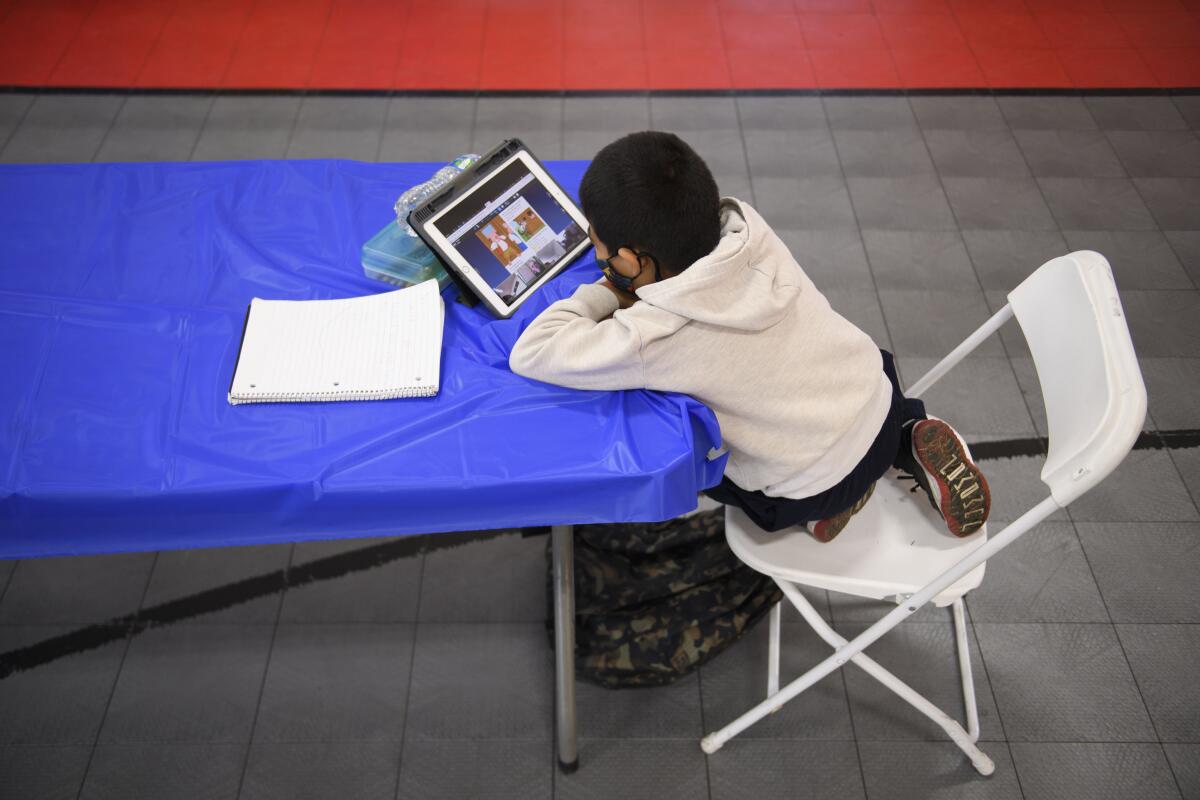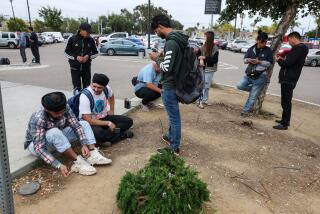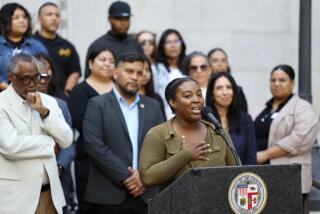Editorial: Internet access is not a luxury. Congress should extend connectivity aid program

- Share via
This month more than 23 million households will lose affordable internet access as part of a pandemic-era federal program that provided low-income households with a credit of between $30 and $75 toward their monthly service bill. Without this aid millions of people risk losing their access to the web — or already have.
Some lawmakers had been trying to allocate more funds to prevent the program from expiring or ending on June 1, but they were not able to get a vote. On Wednesday, a key Senate committee will vote on the Spectrum and National Security Act of 2024, which includes $7 billion to reinstate the aid to the end of this year while Congress works on long-term solutions to broadband affordability.
The House would need to pass the act as well. Given that digital access is no longer a luxury, but an essential requirement of daily life, an extension of the program is reasonable.
California vowed to spend billions to bring fast internet to poor communities. Why is the state prioritizing projects through Beverly Hills and other affluent areas while projects in South L.A., East Oakland are stalled?
The depth of the digital divide was brought to light during the COVID-19 pandemic, when so much of our lives went online. Many people were required to work from home and students forced to attend classes on Zoom. But those with limited financial resources were unable to transfer their lives online smoothly.
Congress passed the Affordable Connectivity Act in 2021 to provide $14.2 billion in aid to qualifying households to pay for monthly internet service and obtain laptops, tablets or desktop computers with a one-time discount of up to $100. But the funding has run out.
The Affordable Connectivity Program, which offers a $30 subsidy, helping millions of households across the U.S. connect to the internet, is slated to expire.
There is a similar federal aid program that is still available called Lifeline, which was established in 1984 to help low-income households afford landline connections. Currently, the households that qualify can receive a credit of up to $9.25 a month and apply it to landlines, cellphone service or broadband services.
“There was this big assumption that everyone was connected, and the pandemic showed we are not,” said Norma Fernandez, chief executive officer of EveryoneOn, a nonprofit that focuses on providing connectivity to communities that are in need.
The ACP program was one of the first federal programs that directly addressed affordable broadband access and it had an immediate effect. California has the most ACP enrollments of any state, with nearly 3 million households, or about 20%, relying on that funding. And only 47% of eligible households in California enrolled in this program, meaning there were still families that could have had more financial support.
Years in the making, L.A. County’s Community Broadband Network is set to launch this year in East L.A., South L.A. and Boyle Heights.
To be eligible for ACP, applicants had to qualify for other federal programs such as Medicaid, be at or below 200% of the federal poverty guidelines or meet eligibility for other low-income internet programs.
A temporary extension of funding for ACP is a short-term solution to the connectivity issue, and lawmakers know that. The internet is constantly evolving with new technologies being introduced daily. We need permanent programs that help those on the wrong side of the digital divide or the gap will continue to grow.
In California at least, there are many organizations, local leaders and activists working on this issue. For example, the city of Long Beach used grants and other funds to hire staff to focus on digital equity and to provide temporary subsidized broadband internet for residents, small businesses and nonprofits, said Rebecca Kauma, director of digital equity at L.A. County’s Internal Services Department.
ACP was one of the resources that helped the nation shrink the digital divide. Let’s not take a step back.
More to Read
A cure for the common opinion
Get thought-provoking perspectives with our weekly newsletter.
You may occasionally receive promotional content from the Los Angeles Times.












